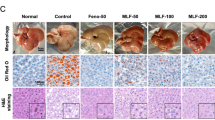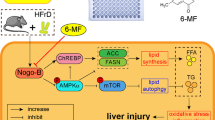Abstract
Consumption of fruits and vegetables is generally regarded as beneficial to plasma lipid profile. The mechanism by which the plant foods induce desirable lipid changes remains unclear. SREBP-2 is crucial in cholesterol metabolism, and it is a major regulator of the cholesterol biosynthesis enzyme HMGCR. Our lab has previously illustrated that apigenin and luteolin could attenuate the nuclear translocation of SREBP-2 through an AMPK-dependent pathway. In the present study, these two flavones were studied for their ability to deter the same in an AMPK-independent signaling route. The processing of SREBP-2 protein was promoted by phorbol 12-myristate 13-acetate (PMA) in the hepatic cells WRL and HepG2, and the increased processing was reversed by apigenin or luteolin co-administration. EMSA results demonstrated that the PMA-induced DNA-binding activity was weakened by the flavones. The increased amount of nuclear SREBP-2 in cells was attenuated by the flavonoid as shown by immunocytochemical imaging. Quantitative reverse transcriptase-polymerase chain reaction assay demonstrated that the transcription of HMGCR under both flavone treatments was reduced. However, apigenin appeared to be stronger than luteolin in restraining PMA-induced HMGCR mRNA expression. Since PMA is a diacylglycerol analog, these findings might have some physiological implications.






Similar content being viewed by others
Abbreviations
- CVD:
-
Cardiovascular disease
- RT-PCR:
-
Reverse transcriptase-polymerase chain reaction
- EMSA:
-
Electromobility shift assay
- SRE:
-
Sterol responsive element
- SREBP:
-
Sterol regulatory element-binding proteins
References
Anum EA, Adera T (2004) Hypercholesterolemia and coronary heart disease in the elderly: a meta-analysis. Ann Epidemiol 14(9):705–721. doi:10.1016/j.annepidem.2003.10.009
Graham DJ, Staffa JA, Shatin D (2004) Incidence of hospitalized rhabdomyolysis in patients treated with lipid-lowering drugs. J Am Med Assoc 292(21):2585–2590
Sakakura Y, Shimano H, Sone H, Takahashi A, Inoue N, Toyoshima H, Suzuki S, Yamada N (2001) Sterol regulatory element-binding proteins induce an entire pathway of cholesterol synthesis. Biochem Biophys Res Commun 286(1):176–183. doi:10.1006/bbrc.2001.5375
Du X, Kristiana I, Wong J, Brown AJ (2006) Involvement of Akt in ER-to-Golgi transport of SCAP/SREBP: a link between a key cell proliferative pathway and membrane synthesis. Mol Biol Cell 17(6):2735–2745. doi:10.1091/mbc.E05-11-1094
Kotzka J, Lehr S, Roth G, Avci H, Knebel B, Muller-Wieland D (2004) Insulin-activated Erk-mitogen-activated protein kinases phosphorylate sterol regulatory element-binding Protein-2 at serine residues 432 and 455 in vivo. J Biol Chem 279(21):22404–22411. doi:10.1074/jbc.M401198200
Li Y, Xu S, Mihaylova MM, Zheng B, Hou X, Jiang B, Park O, Luo Z, Lefai E, Shyy JY, Gao B, Wierzbicki M, Verbeuren TJ, Shaw RJ, Cohen RA, Zang M (2011) AMPK phosphorylates and inhibits SREBP activity to attenuate hepatic steatosis and atherosclerosis in diet-induced insulin-resistant mice. Cell Metab 13(4):376–388. doi:10.1016/j.cmet.2011.03.009
Arai Y, Watanabe S, Kimira M, Shimoi K, Mochizuki R, Kinae N (2000) Dietary intakes of flavonols, flavones and isoflavones by Japanese women and the inverse correlation between quercetin intake and plasma LDL cholesterol concentration. J Nutr 130(9):2243–2250
Anderson JW, Johnstone BM, Cook-Newell ME (1995) Meta-analysis of the effects of soy protein intake on serum lipids. N Engl J Med 333(5):276–282. doi:10.1056/NEJM199508033330502
Hertog MG, Kromhout D, Aravanis C, Blackburn H, Buzina R, Fidanza F, Giampaoli S, Jansen A, Menotti A, Nedeljkovic S et al (1995) Flavonoid intake and long-term risk of coronary heart disease and cancer in the seven countries study. Arch Intern Med 155(4):381–386
Zhan S, Ho SC (2005) Meta-analysis of the effects of soy protein containing isoflavones on the lipid profile. Am J Clin Nutr 81(2):397–408
Janssen K, Mensink RP, Cox FJ, Harryvan JL, Hovenier R, Hollman PC, Katan MB (1998) Effects of the flavonoids quercetin and apigenin on hemostasis in healthy volunteers: results from an in vitro and a dietary supplement study. Am J Clin Nutr 67(2):255–262
Jeong HJ, Shin YG, Kim IH, Pezzuto JM (1999) Inhibition of aromatase activity by flavonoids. Arch Pharmacal Res 22(3):309–312
van Meeuwen JA, Nijmeijer S, Mutarapat T, Ruchirawat S, de Jong PC, Piersma AH, van den Berg M (2008) Aromatase inhibition by synthetic lactones and flavonoids in human placental microsomes and breast fibroblasts—a comparative study. Toxicol Appl Pharmacol 228(3):269–276. doi:10.1016/j.taap.2007.12.007
Li F, Ye L, Lin SM, Leung LK (2011) Dietary flavones and flavonones display differential effects on aromatase (CYP19) transcription in the breast cancer cells MCF-7. Mol Cell Endocrinol 344(1–2):51–58. doi:10.1016/j.mce.2011.06.024
Li F, Wong TY, Lin SM, Chow S, Cheung WH, Chan FL, Chen S, Leung LK (2014) Coadministrating luteolin minimizes the side effects of the aromatase inhibitor letrozole. J Pharmacol Exp Ther 351(2):270–277. doi:10.1124/jpet.114.216754
Surh YJ (2003) Cancer chemoprevention with dietary phytochemicals. Nat Rev Cancer 3(10):768–780. doi:10.1038/nrc1189
Nielsen SE, Young JF, Daneshvar B, Lauridsen ST, Knuthsen P, Sandstrom B, Dragsted LO (1999) Effect of parsley (Petroselinum crispum) intake on urinary apigenin excretion, blood antioxidant enzymes and biomarkers for oxidative stress in human subjects. Br J Nutr 81(6):447–455
Yang CS, Landau JM, Huang MT, Newmark HL (2001) Inhibition of carcinogenesis by dietary polyphenolic compounds. Annu Rev Nutr 21:381–406. doi:10.1146/annurev.nutr.21.1.381
Thiery-Vuillemin A, Nguyen T, Pivot X, Spano JP, Dufresnne A, Soria JC (2005) Molecularly targeted agents: their promise as cancer chemopreventive interventions. Eur J Cancer 41(13):2003–2015. doi:10.1016/j.ejca.2005.06.005
Al-Jubouri HHF, A-J BH, Farid I, Jasim F, Wehbi S (1990) The effect of chamomile on hyperlipidemias in rats. J Fac Medicine (Baghdad) 32(1):7
Jornayvaz FR, Shulman GI (2012) Diacylglycerol activation of protein kinase Cepsilon and hepatic insulin resistance. Cell Metab 15(5):574–584. doi:10.1016/j.cmet.2012.03.005
Wong TY, Lin SM, Leung LK (2015) The flavone apigenin blocks nuclear translocation of sterol regulatory element-binding protein-2 in the hepatic cells WRL-68. Br J Nutr 113(12):1844–1852. doi:10.1017/S0007114515001312
Wong TY, Lin SM, Leung LK (2015) The flavone luteolin suppresses SREBP-2 expression and post-translational activation in hepatic cells. PLoS ONE 10(8):e0135637. doi:10.1371/journal.pone.0135637
Wong T, Tan YQ, Lin S-M, Leung LK (2016) Phorbol 12-myristate 13-acetate promotes nuclear translocation of hepatic steroid response element binding protein-2. Int J Biochem Cell Biol 75:1–10
Livak KJ, Schmittgen TD (2001) Analysis of relative gene expression data using real-time quantitative PCR and the 2(−Delta Delta C(T)) method. Methods 25(4):402–408. doi:10.1006/meth.2001.1262
Keller L, Murphy C, Wang HX, Fratiglioni L, Olin M, Gafvels M, Bjorkhem I, Graff C, Meaney S (2010) A functional polymorphism in the HMGCR promoter affects transcriptional activity but not the risk for Alzheimer disease in Swedish populations. Brain Res 1344:185–191. doi:10.1016/j.brainres.2010.04.073
Ruiz R, Jideonwo V, Ahn M, Surendran S, Tagliabracci VS, Hou Y, Gamble A, Kerner J, Irimia-Dominguez JM, Puchowicz MA, DePaoli-Roach A, Hoppel C, Roach P, Morral N (2014) Sterol regulatory element-binding protein-1 (SREBP-1) is required to regulate glycogen synthesis and gluconeogenic gene expression in mouse liver. J Biol Chem 289(9):5510–5517. doi:10.1074/jbc.M113.541110
Knebel B, Lehr S, Hartwig S, Haas J, Kaber G, Dicken HD, Susanto F, Bohne L, Jacob S, Nitzgen U, Passlack W, Muller-Wieland D, Kotzka J (2014) Phosphorylation of sterol regulatory element-binding protein (SREBP)-1c by p38 kinases, ERK and JNK influences lipid metabolism and the secretome of human liver cell line HepG2. Arch Physiol Biochem 120(5):216–227. doi:10.3109/13813455.2014.973418
Kang OH, Choi JG, Lee JH, Kwon DY (2010) Luteolin isolated from the flowers of Lonicera japonica suppresses inflammatory mediator release by blocking NF-kappaB and MAPKs activation pathways in HMC-1 cells. Molecules 15(1):385–398. doi:10.3390/molecules15010385
Noh HJ, Sung EG, Kim JY, Lee TJ, Song IH (2010) Suppression of phorbol-12-myristate-13-acetate-induced tumor cell invasion by apigenin via the inhibition of p38 mitogen-activated protein kinase-dependent matrix metalloproteinase-9 expression. Oncol Rep 24(1):277–283
Garige M, Gong M, Varatharajalu R, Lakshman MR (2010) Quercetin up-regulates paraoxonase 1 gene expression via sterol regulatory element binding protein 2 that translocates from the endoplasmic reticulum to the nucleus where it specifically interacts with sterol responsive element-like sequence in paraoxonase 1 promoter in HuH7 liver cells. Metabolism 59(9):1372–1378. doi:10.1016/j.metabol.2009.12.025
Moon J, Lee SM, Do HJ, Cho Y, Chung JH, Shin MJ (2012) Quercetin up-regulates LDL receptor expression in HepG2 cells. Phytother Res 26(11):1688–1694. doi:10.1002/ptr.4646
Mehta NK (1841) Mehta KD (2014) Protein kinase C-beta: an emerging connection between nutrient excess and obesity. Biochim Biophys Acta 10:1491–1497. doi:10.1016/j.bbalip.2014.07.011
Harja E, Chang JS, Lu Y, Leitges M, Zou YS, Schmidt AM, Yan SF (2009) Mice deficient in PKCbeta and apolipoprotein E display decreased atherosclerosis. FASEB J 23(4):1081–1091. doi:10.1096/fj.08-120345
Wu N, Sarna LK, Hwang SY, Zhu Q, Wang P, Siow YL, O K (2013) Activation of 3-hydroxy-3-methylglutaryl coenzyme A (HMG-CoA) reductase during high fat diet feeding. Biochim Biophys Acta 1832(10):1560–1568. doi:10.1016/j.bbadis.2013.04.024
Huang W, Bansode RR, Bal NC, Mehta M, Mehta KD (2012) Protein kinase Cbeta deficiency attenuates obesity syndrome of ob/ob mice by promoting white adipose tissue remodeling. J Lipid Res 53(3):368–378. doi:10.1194/jlr.M019687
Singh DK, Banerjee S, Porter TD (2009) Green and black tea extracts inhibit HMG-CoA reductase and activate AMP kinase to decrease cholesterol synthesis in hepatoma cells. J Nutr Biochem 20(10):816–822. doi:10.1016/j.jnutbio.2008.07.011
Singh DK, Li L, Porter TD (2006) Policosanol inhibits cholesterol synthesis in hepatoma cells by activation of AMP-kinase. J Pharmacol Exp Ther 318(3):1020–1026. doi:10.1124/jpet.106.107144
Shih CC, Lin CH, Lin YJ, Wu JB (2013) Validation of the antidiabetic and hypolipidemic effects of hawthorn by assessment of gluconeogenesis and lipogenesis related genes and AMP-activated protein kinase phosphorylation. Evid Based Complement Altern Med 2013:597067. doi:10.1155/2013/597067
Acknowledgments
This study was supported by the Chinese University of Hong Kong Direct Grant Project (Grant # 4053047).
Author information
Authors and Affiliations
Corresponding author
Ethics declarations
Conflict of Interest
The authors do not have conflicts of interest to declare in this study.
Additional information
Yan Qin Tan and Tsz Yan Wong have contributed equally to this study.
Rights and permissions
About this article
Cite this article
Tan, Y.Q., Wong, T.Y., Lin, Sm. et al. Dietary flavones counteract phorbol 12-myristate 13-acetate-induced SREBP-2 processing in hepatic cells. Mol Cell Biochem 424, 163–172 (2017). https://doi.org/10.1007/s11010-016-2851-6
Received:
Accepted:
Published:
Issue Date:
DOI: https://doi.org/10.1007/s11010-016-2851-6




